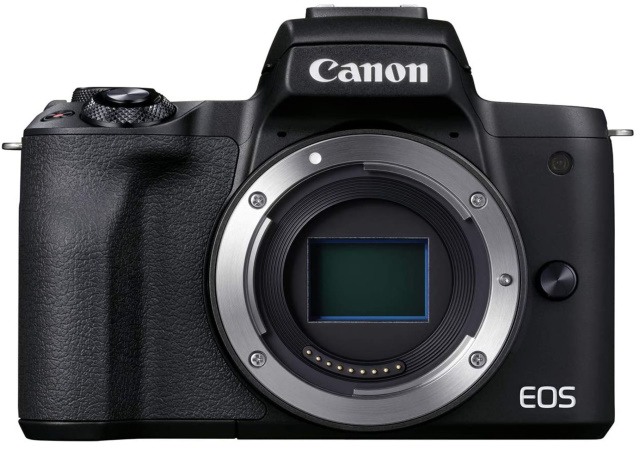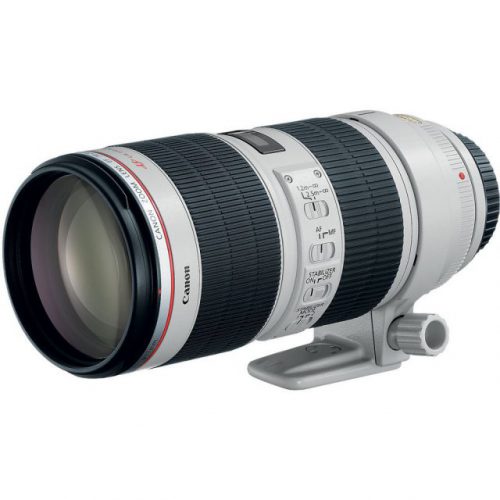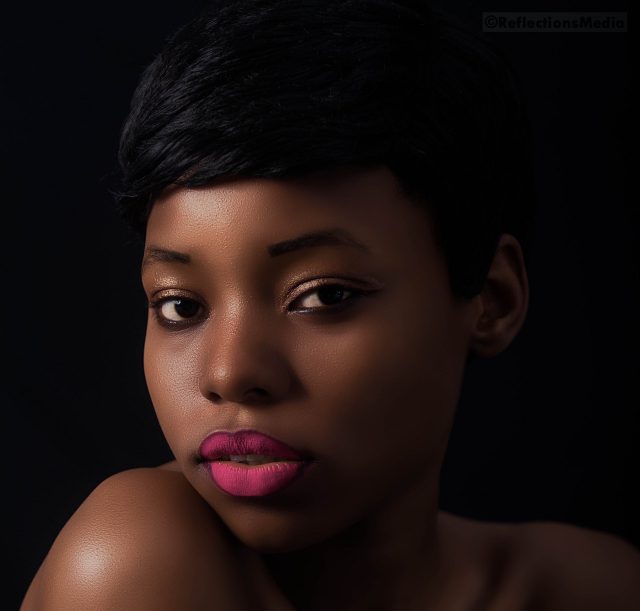If you are thinking of making videos and creating your own channel on YouTube, you are on the right road. Every minute, people around the world upload more than 500 hours’ worth of video footage to YouTube, people watch 1 billion hours of content daily, and YouTube has the second-largest search engine in the world, behind Google. This means people are constantly searching for information using YouTube and discovering videos relating to these topics.
Why do you need to film a video?
YouTube provides a simple way for people to store videos online and share them with others. YouTube videos cover any topic anyone cares to upload a video about. These videos are easy to share via other forms of social media, email, and websites and can also be embedded in other websites.
There are many types of videos on YouTube:
- Video Tutorials & Educational: Also known as, how-to videos, tutorial videos are effective formats to educate people.
- Whiteboard Videos: that is when you record yourself explaining a concept or your tool.
- Listicle Videos: list videos like “X best” or “X top” are another popular YouTube video type
- Product Reviews
- Challenge Videos & Behind the Scenes (BTS) Videos
- Product Demo Videos
- Q&A Videos
Best Camera for Filming YouTube Videos
A good and adequate setup will often yield better results. A good microphone, a tripod, and lighting system (Soft box, umbrella, reflector, etc.) are all key elements of the setup, but the heart of any YouTube setup is the camera.
While anyone can get started making YouTube videos with just their smartphone, or consumer Video Cameras. It all depends on what you need, and what you want to share.
You may want to look into a compact camera that comes with features aimed to make vlogging easier, a mirrorless or DSLR camera for studio setups and higher quality video, or an action camera to take with you wherever you go.
The following list discusses the four types of cameras for video recording on YouTube, and our recommendation camera models.
1- Webcam
A webcam is a great option for quickly creating online videos, tutorials, or live streaming from your office. Along with a webcam, you can use an app like Webcam Settings or iGlasses for Mac to control your webcam’s exposure, white balance, and focus settings. While they are very limited in their aesthetic quality, and we wouldn’t recommend them when shooting your next Oscar-worthy film, they are perfect for several types of video creators.
Pros of using a Webcam for video production
- Easy to use
- Record directly to your computer
Moreover, their Cons are:
- Poor audio quality (you’ll want a USB microphone in addition)
- Lack of controls
- Poor low-light performance
- Sharpness isn’t great
Webcams are great for online course creators who want to easily add talking head videos to their courses. They’re also great for any online marketer who does webinars or other types of sales videos from their office.
Logitech Brio 4K Webcam
Look your best in most lighting environments as you work from home, attend business meetings, and stay in touch with family and friends via Zoom, Teams, and Skype with the BRIO Ultra HD Pro Webcam from Logitech.
With a resolution of up to 4K Ultra HD and frame rates up to 90 fps, you’ll be streaming crisp and smooth video, while RightLight3 with HDR helps create more even exposure in low light, direct sunlight, or high contrast conditions.
A glass lens with a 5x digital zoom further enhances image quality and fine details, while dual omnidirectional mics with noise cancellation technology ensure that your voice is center stage. A field of view of up to 90° creates a wide-angle image that can accommodate more than one person. When you want to safeguard your privacy, engage the included privacy shade. To facilitate a more hands-free experience, an infrared sensor allows for login via Windows Hello.
2- The Consumer Camcorder
They refer to simple cameras designed for personal non-professional use. In most cases, these cameras are less expensive and can be bought in the range of $200 to $1,500 and they usually come with smaller imaging chips. The images from consumer video cameras are not as great in terms of quality as the images from a professional camera. Unlike their professional counterparts, consumer cameras don’t have extensions to allow for extra audio inputs for professional sound equipment and all of them have fixed lenses with the outdated digital revolution. They have the following pros:
- Plug-and-play, easy to use
- Don’t have to purchase additional lenses
- Continuous recording for hours
- Great autofocus
- XLR audio inputs and manual adjustments
- Many shoot up to 4K footage
- Better microphones than DSLR or mirrorless cameras
- Good auto exposure
- Longer battery life
Moreover, they have the following Cons:
- Not great for cinematic style
- The low-light recording is generally not great
- Can’t take great still images with them (sometimes it’s not even an option)
If you’re shooting something like sports or a talent show, it’s great to be able to continuously shoot for multiple hours straight. They can also be used for studio setups (especially DIY ones)
Sony HDR-CX405 Handycam
The Sony HDR-CX405 HD Handycam features an Exmor R CMOS sensor and a wide-angle Carl Zeiss zoom lens with 30x optical zoom. The CX-405 captures Full HD 1920 x 1080 video at 60p and 9.2MP still images to optional Memory Stick Micro and microSD/SDHC/SDXC media cards. The Exmor R CMOS sensor is designed for increased sensitivity in low light situations and the Optical SteadyShot image stabilization with Intelligent Active Mode delivers smooth video. Users can monitor and playback footage via the 2.7″ LCD with 230K dot resolution.
Canon Vixia HF G50 UHD 4K Camcorder
Record high-resolution 4K video with the compact, black Canon Vixia HF G50 4K Camcorder. The G50 features a 1/2.3″ UHD 4K CMOS sensor, a DIGIC DV 6 image processor, an 8-blade circular aperture, 5-axis image stabilization, and a 20x optical zoom in 4K, and up to UHD 4K30 resolution.
It records up to UHD 4K30 3840 x 2160 video to separately available SD cards using the built-in dual SD card slots. Recording features also include slow-motion, fast-motion, and interval recording in both HD and 4K. The lens features a wide 29.3 angle of view and a 20x optical zoom, which allows zooming to 627mm in 4K. The five-axis advanced image stabilization reduces shake and jitter, especially at longer focal lengths.

Photo by ELEVATE
3- DSLR & Mirrorless Video Cameras
The popularity of these cameras in shooting videos has grown in the past few years due to the following outstanding characteristics:
- They have big imaging sensors, which lead to high-quality images.
- They have interchangeable lenses which allow for more creative flexibility, making it possible for you to use first-class lenses if you can afford them.
- Low light sensitivity means great for shooting in low light
- Low light sensitivity means great for shooting in low light
But they also have the following limitations:
- Often a lack of audio inputs and controls compared to traditional video cameras
- Many models lack video assisting tools like zebras and peaking (for exposure & focus)
- Many cameras have a time limit for how long you can shoot (i.e. 15 or 30-minute clip max)
They’re great for travelers, vloggers, low-budget filmmakers, documentary makers, online instructors, and families. The only people who might not need or want this kind of camera are live streamers who don’t want to deal with a confusing video setup.
Sony ZV-1
The Sony ZV-1 is a purpose-built compact camera blending the proven imaging capabilities of the RX100-series platform with an updated physical design for more efficient content creation.
Featuring a side flip-out 3.0″ touchscreen and a directional 3-capsule microphone that are perfect for front-facing recording, the ZV-1 also caters to this crowd with the Product Showcase Setting, Background Defocus function, Soft Skin Effect, and Face Priority Auto-Exposure.
An impressive ZEISS 24-70mm-equivalent standard zoom lens, with a bright f/1.8-2.8 maximum aperture range, is also featured and, suiting recording while walking, Active SteadyShot image stabilization helps to steady footage and reduce the appearance of camera shake for smoother takes.
Inside, the ZV-1 has some familiar imaging attributes in the form of a 20.1MP 1″-type Exmor RS stacked CMOS sensor and BIONZ X image processor, with front-end LSI, which contributes to impressively fast performance along with wide-ranging sensitivity to suit working in a variety of conditions. The processing capabilities avail Real-Time Eye AF and Real-Time Tracking for quick and precise focusing and subject tracking.
In terms of video specs, UHD 4K recording at 30p is supported for extended takes, and a micro-HDMI port can be used in conjunction with an external recorder or monitor if desired. The footage also benefitted from Sony’s S-Log3/2 and HLG picture profiles that match up with their professional cine cameras for refined color, dynamic range, and detail when recording.
Canon PowerShot G7 X Mark II
Offering multimedia fluency within a compact design, the black Canon PowerShot G7 X Mark III is a sleek camera distinguished by its advanced sensor design and flexible imaging capabilities. Its 20.1MP 1″ CMOS sensor uses a stacked design, which pairs with the DIGIC 8 image processor to realize especially fast focusing performance, full-resolution shooting at up to 20 fps, and UHD 4K30p video recording.
Optically, the G7 X Mark III houses a 4.2x zoom lens, which covers a 24-100mm equivalent focal length range for wide-angle to short-telephoto fields of view. An f/1.8-2.8 maximum aperture range suits working in difficult lighting conditions as does an Optical Image Stabilizer, which compensates for the effects of camera shake.
The camera’s slim design also incorporates a 3.0″ 180° tilting touchscreen LCD and has both Bluetooth and Wi-Fi for wirelessly connecting to a mobile device.
Canon EOS M50 Mark II
Catering to vloggers and content creators, the black Canon EOS M50 Mark II is a versatile multimedia camera with a well-rounded photo and video feature set.
Sporting improved focusing, recording, and sharing capabilities, the M50 Mark II still revolves around the proven 24.1MP APS-C CMOS sensor and DIGIC 8 image processor, which enables a quick 10 fps shooting rate, a native sensitivity range of ISO 100-25600, and UHD 4K video recording at 23.98 fps, along with Full HD 1080p60 and HD 720p120 for slow-motion capture.
Sensor-based Dual Pixel CMOS AF has been improved with faster speeds and refined Eye Detection AF performance and supports both Eye Detection and Face Detection focusing modes when working with Movie Servo AF to help keep a sharp focus on the subject matter. Additionally, Combination IS 5-axis image stabilization also helps to realize steady, shake-free recording by minimizing the appearance of camera shake.
Panasonic Lumix GH5 II
The Panasonic Lumix GH5 II provides a professional-quality imaging platform for shooters who demand versatile video and still capabilities in a single compact camera.
Featuring a 20.3MP Live MOS Sensor with AR Coating, the camera records DCI and UHD 4K with the full sensor area and can output 10-bit 4:2:0 internally up to 60p, or 4:2:2 at 30p. The GH5 II offers unlimited video recording for less downtime when filming, and the camera ships with pre-installed V-Log L for multi-camera recording, making it is easy to match the color tone with the footage recorded by other VariCam-series cameras.
The included DMW-BLK22 battery provides approximately 410 shots per charge when using the rear monitor or electronic viewfinder, and the high-capacity battery can be quickly charged with the bundled USB 3.1 Type-C cable. You can also supply continuous power to the camera while shooting photos and video via the included USB cable.
A 3″ 1.84m-dot rear TFT LCD monitor provides flexible framing, high visibility, and vivid color to support viewing from a variety of angles. An updated 5-axis sensor stabilization system works with Lumix O.I.S lenses to activate Dual I.S. 2 for highly effective shake correction.
A Depth-from-Defocus autofocus system benefits both still and video recording modes ensuring fast and precise focus. The GH5 II features a human face, eye, head, body, and animal recognition. Livestreaming via a router is available as well with Lumix Network Setting Software. Whether indoors or outdoors, only the camera and a smartphone are required to reach an audience, making the GH5 II an ideal camera for electronic newsgathering, travel, event, lecture, and live commerce applications.
Sony Alpha a7 III
The Sony a7 III is a well-rounded camera suitable for both photo and video applications in a variety of working situations. Refined for improved speed and low-light performance, the full-frame 24.2MP Exmor R BSI CMOS sensor and BIONZ X image processor pair to realize an impressive 10 fps continuous shooting rate and improved autofocus performance for faster, more reliable subject tracking along with wide frame coverage.
This updated Fast Hybrid AF System employs a combination of 693 phase-detection points and 425 contrast-detection areas for quicker acquirement of focus in a variety of lighting conditions, and also maintains focus on subjects more effectively. In addition to speed and AF, the processing improvements also help to realize greater image clarity and reduced noise throughout the sensitivity range from ISO 100-51200, which can further be expanded to ISO 50-204800.
Video recording capabilities have also been extended for enhanced quality when recording UHD 4K video with the full width of the full-frame sensor to minimize moiré and aliasing. Additionally, benefitting both stills and video operation, the a7 III utilizes a 5-axis SteadyShot INSIDE sensor-shift image stabilization, which is now effective to minimize the appearance of camera shake by up to 5 stops.
Beyond just updates to the imaging system, the a7 III’s body design has also been revised to include a rear 3.0″ 922k-dot touchscreen LCD, which has a tilting design to better support working from high and low angles. A 2.36m-dot Tru-Finder OLED EVF is also featured for bright and clear eye-level monitoring. For greater shooting flexibility, dual SD memory card slots are now featured, and a larger NP-FZ100 battery is also employed to achieve up to approximately 710 shots per charge. Suiting the camera’s use in trying conditions, the magnesium-alloy chassis and weather-sealing also render the a7 III dust- and moisture-resistant.
4- Action Camera
If you love getting outdoors and want to capture your next adventure, then the action camera is for you. Over the years, the quality has continued to get better and better. 4K is now the norm on most models. Some are even built for 360° VR shooting.
Pros of using an Action Camera for video production
- Super small, yet high quality
- Easy to use
- Rugged
- Great for underwater filmmaking
- Many attachments/mounts for different purposes such as cycling, driving, skating, surfing, skydiving, etc.
- Long battery life
Cons of using an Action Camera for video production
- Fixed lens with minimal focal length options
- Many don’t have a back screen (you need to buy one or use another mobile device to actually see what you’re filming)
- Poor low-light capabilities
GoPro HERO10 Black
Updating their flagship action camera with a 23MP sensor and a new G2 chip design for enhanced functionality. This newest model provides high-detail 5.3K60, 4K120, and 2.7K240 video and 23MP photos with updated professional settings and practical functions from its predecessor, the HERO9.
The front display is now larger at 1.4″ and offers a live view, allowing you to frame shots for vlogging and similar uses. A new HyperSmooth 4.0 digital image stabilization with in-camera horizon leveling lets you produce even smoother, more stable videos without a gimbal. While still a full-on action camera, the HERO10 Black makes use of its immense feature set to also let you use it as a webcam and for 1080p Full HD live streaming, and it also automatically connects to the cloud, allowing your footage to be uploaded while you shoot when you have a GoPro subscription.
It provides a comprehensive solution for all your action cam adventures and it maintains a robust design that’s 33′ waterproof without an external housing required.
The suite of Power Tools remains consistent, including HindSight, and when turned on, it allows you to record 30 seconds of video before you hit the record button, ensuring you’ll never miss that important unexpected moment at a sports game or other event.
It includes a large 2.3″ rear touchscreen with touch zoom, raw photo, and audio capture, looping video, horizon leveling, data overlays, time-lapse and night-lapse, LiveBurst to capture 1.5 seconds before and after your shot, 8x slow-motion, a 100 Mb/s bit rate, and three microphones with advanced wind noise reduction.
Can’t afford a brand-new camera?
Sometimes, buying a new camera can be very expensive for many people. However, Keh is a great option to get a used one at a reasonable price. Read the full review here.
Related posts
How To Shoot Video With DSLR Camera
How To Shoot Videos Like A PRO In A Low Light Condition
What Is The Best Video Editing Software For Beginners?
What Is The Best Gopro Camera To Buy
Thanks for reading, I hope you enjoyed the article, in case you have any questions just drop them below & I will be happy to answer you.
The featured image Photo by Mikhail Nilov
If you enjoy the site, don’t forget to subscribe, we will only inform you when a new article is posted.



















Having a YouTube channel and publishing videos does seem to be one of the best ways to make money online these days. One needs to have the right equipment to make good quality videos, and that start with a camera. I have been considering starting to make videos and the first thing that I would need, is a camera.
I had originally though of just using the camera and video facility on my telephone, but after reading this post, I can see that make a professional looking video, I would need a camcorder. Which one of these cameras that you listed would be best for a beginner?
Thank you for your comment, my advice is to select the Sony HDR-CX405 HD Handycam.
It is a good camera for beginners, it is affordable and not expensive.
Great article. In my opinion, it offers an option for any type of youtube video that you want to create. I would go with Sony HDR-CX405 because the price does not make your credit card cry and seems very portable.
For me, the fact that it records in 1080p and also for a long period of time makes it perfect.
I agree with you, it is a good option!
Thanks for the comment.
Thank you for this article. I have been considering starting a YouTube video of my daily early morning bike rides on the island that I live on and was thinking I could just use my phone. However you have now educated me on the need for an Action Camera and I shall be taking a serious look at the GoProHero10 Black. Thank you
Thanks for the comment, I wish you good luck with your new channel.